|
|
||||
|
By Jo Nova Nigel Farage’s Reform UK is transforming British politicsThe Tories have already dropped Net Zero policies, but now the effects are spreading to Labour and the Greens. Australian spineless political parties should note that voters reward parties who lead the way in dumping Net Zero and immigration. Just the fear of what might happen at the Council Elections meant Tony Blair, the former Labour PM, dropped the bombshell that Net Zero was unworkable, and that people were being silenced because they were terrified of being called Climate Deniers. A wave of skepticism was sweeping across Europe and Blair wanted to jump in ahead to steer the rebellion somewhat and promote his own plans. Reform stormed the English council elections in a seismic way — winning 677 seats, twice as many as the Conservatives, and more than sixfold than Labour. Now even the Guardian are writing headlines asking if the Labour party will abandon Net Zero? In the end the article is another advert for Net Zero (aren’t they all) but it’s obvious the Guardian editors are worried that Labour might be tossing the idea around. Two weeks ago this would have been unthinkable. The win for Farage has rattled the cages so much that even some Greens are saying that Net Zero is hurting the poor (only thirty years too late). The Deputy Leader of the Green Party in England and Wales (which is not the same as The UK Greens) is running for the Party leadership on a whole new thing called “Eco-populism”. The eco-populist against net-zeroMegan Kenyon, New Statesman Zack Polanski is looking to lead the Green Party, and to challenge Labour’s climate policy from the left. One of Reform’s primary battlegrounds with the government is over climate policy, as Farage wields net zero as a culture war sledgehammer. Polanski similarly hopes to put the pressure on Labour over this issue – but from the left. “I’m really angry about net zero,” he told me, “I’m angry that the government are expecting some of the poorest in this country to step up to net zero, expecting people to install heat pumps or expecting people to get a train rather than a plane, even though a plane is a much cheaper option”. Taken at face value, these words could well have been spoken by a Reform candidate or councillor – almost as though it is out of Farage’s own playbook. “While I may even agree with Nigel Farage’s diagnosis of the problems, it’s very clear that he doesn’t really intend to do anything about those things,” Polanski said. His solution (of course) is to tax “businesses” — (because they never sell to the poor, and wouldn’t pass on those taxes…. right?) Polanski believes the government should target UK businesses and the wealthy to shoulder the cost of the green transition via a wealth tax. Voters flock to parties who stand up for them against the namecallers. (And it’s a shame the Nationals didn’t choose Matt Canavan to lead them!)
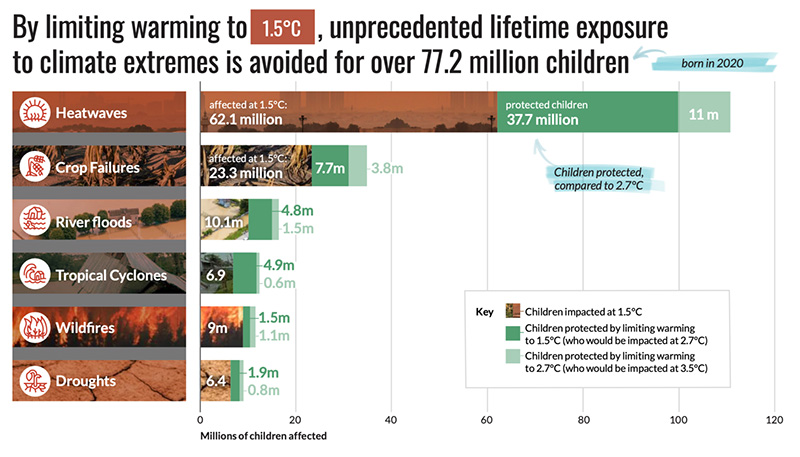 Number of people born in 2020 who will face “unprecedented lifetime exposure” to heatwaves, crop failures, river floods, tropical cyclones, wildfires and droughts under 1.5C 2.7C and 3.5C warming. Source: Save the Children | CarbonBrief By Jo Nova It’s like expert scientists in Nature have never heard of an air-conditioner?The Blob launched its latest permutation of Fire and Brimstone. By using broken climate models, and ignoring ten thousand years of bones, rocks, sediments, ice-cores, caves and corals, they were able to pretend that babies today will suffer “unprecedented” storms, floods and fires of every kind and it’s all your fault. The paper by Grant et al ticks the full Marxist Bingo Card whipping up class warfare driven by “intergenerational inequality”. It was funded by the EU and is being used to shake down citizens to get more money and power for the EU, so they will be happy. “Mission accomplished”. (That’s what ‘The ScienceTM’ is for right?) But it is embarrassing. We have to talk about that formerly esteemed “Nature” journal. For starters, the researchers behave like the universe only formed in 1960. Their whole shtick is that babies today will live through more ghastly heatwaves than their grandparents born in 1960 did. And it’s all “unprecedented” (they use the term 25 times in the paper). It’s as if the Holocene did not exist. Sea levels were at least a metre higher 8,000 years ago. How could the world not have been hotter? And how did those cats, dogs, geese and frogs live in the high arctic north of Norway 9,000 years ago. There were thousands of bones in those caves. Do they or do they not exist? Spare a thought for the babies of 6,000 BC who lived through far more heatwaves in their lifetime than any will today, and they didn’t have an air conditioner, a baby monitor, or a Fire Department to call when a bushfire broke out. Somehow they didn’t become extinct. The solution to all the potential, imagined cataclysm of one more degree (if it even happens) is cheap electricity. If we try to save babies with slave-made-solar panels from Xingjiang we’ll be committing a crime (and more than one). We’ll save more babies by burning fossil fuels and making electricity cheap again, so people can afford to turn the air-con on. Airconditioners are the miracle that save 20,000 lives in USA each year. As it got hotter in Spain from 1980 to 2015 fewer people died — and it was because more of them were able to get air conditioning. The Science says fossil fuels save lives. Global deaths and disasters are down in the last 100 years. But shameless UN lies are up. To solve the increase in global disasters, just axe the UN. 
Deaths are down per capita from fire, landslide, storm, flood, extreme temperatures and drought.(Our World in Data). Keep reading → By Jo Nova What were they thinking?Despite 30 years of wall-to-wall propaganda most adults seem to feel that Climate Change is not an emergency. For some reason, they’d rather cut their electricity bill now, than cool the world by a thousandth of a degree in a hundred years time. It’s taken billions of dollars worth of prime time news, school doom projects, clean-green advertising, and hot-weather-girl hyperbole to keep the fantasy levitating. Not to mention the weeping lectures from 97% of experts — yet somehow, improbably, most people are not buying it. Imagine if we had a free press, and the Nobel Prize winners who disagreed were interviewed by the 7:30 Report or 60 minutes? Imagine if they talked to electrical engineers and geologists on the news? It wouldn’t be 60% of voters who were skeptical, it would be 100%. He who controls the media, can confuse 40% of the people. Thanks to Will Jones at the Daily Sceptic. Nigel Farage speaks for voters on net zero. Here’s how we knowMichael Deacon, Telegraph, UKThis week, a new polling firm called Merlin Strategy asked voters for their views on tackling climate change. But here’s the crucial thing, it didn’t merely ask them: “Do you support net zero?” Instead, it asked them which was more important: action to achieve net zero, or cutting the cost of living. And guess what they said? Almost 60 per cent chose cutting the cost of living, while a mere 13 per cent chose net zero. So 13% were wealthy enough, or obsessed enough, that they were willing to say they wanted to pay more to “put environmental aims first”. (Or maybe they worked in the industry). Cutting cost of living MUST come before expensive Net Zero driveJack Elsom, The Sun A Merlin Strategy poll of 3,000 people found 59 per cent of Brits agreed that “action to reduce the cost of living has to come first over sustainability and being eco-friendly”. Just 13 per cent of people thought ministers should put environmental aims first. The verdict was returned by supporters of all parties. For Labour voters, 61 per cent agreed and 12 per cent disagreed, for Tories it was 70 per cent and eight per cent, and for Reform it was 65 per cent and 15 per cent. Clearly most polls ask loaded silly questions so they get loaded silly answers. They ask open apple-pie questions “Would you like the government to spend other people’s money making storms nicer?” But it isn’t exactly hard to write surveys that ask people to rank choices, or to quiz them about what they would be willing to pay, yet pollsters rarely do that. The point of most polls is not to tell the Blob what the people want, it’s to tell the people what The Blob wants. Think about what polls like this say about our democracies. In theory, after surveys like this come out (and they have many times) if political parties were trying to serve the people, they would quietly drop the Net Zero plans so they could win over more voters. Instead, the two major parties push on year after year, almost as if they serve something else. This result is nearly identical to one two years ago in the UK that found 62% said reducing electricity bills was more important than climate targets. Yet the Tories self-immolated, and Labour got elected but dug themselves a hole they didn’t need to dig. Why? ________________________ PS: The New Pope has been picked –– a man of the times, American cardinal Robert Prevost, originally of Chicago – who is a described as a fierce opponent of same-sex marriage and gender studies. He opposed a plan in Peru to add gender studies instruction in classrooms, saying “The promotion of gender ideology is confusing, because it seeks to create genders that don’t exist.” I don’t think the Left will be happy with Pope Leo XIV. The ABC were clearly hoping for the more progressive candidates from Asia and Africa.
By Jo Nova A candidate for this years Cult Science Oscar:The Coal Plant God is at it again — causing the oceans to swallow South Africa on the one hand and lifting up the land by 2mm a year with the other. (A lucky coincidence that disguises the horrors of rising seas, eh?). Apparently we used to think the land was rising due to hot plumes of magma far below, but now researchers say its because a drought has made the crustal plate lighter. Even though no model can predict rainfall, everyone reading the tea-leaves, and editing newspapers, can see that climate change caused the drought. Satellite data reveals climate change is lifting South Africa out of the oceanJoshua Shavit, BrighterSide Instead of heat from below, the Earth’s crust in parts of South Africa appears to be lifting due to water loss above. When surface and underground water vanish, the weight on the land decreases. That loss of pressure lets the land subtly spring upward, like a sponge expanding after being squeezed. The precambrian crust under South Africa is some of the oldest in the world, and the research team proudly tells us they “analyzed satellite and climate data spanning nearly a decade.” That much? This groundbreaking conclusion comes from researchers at the University of Bonn… The researchers used GPS measurements, satellite data, and hydrological models to study the correlation between areas experiencing severe droughts and significant land uplift. Not to knock the detailed and creative work of said researchers but this is typical of Big Government strangled science. It must have cost a lot of money, involved many salaries and much high-tech equipment, but in the end all conclusions are tortured to blame “climate change”. The paper itself only mentions anthropogenic climate change once, but the press release and news stories turn it into a horror show, and none of the experts at universities around the world will be able to say a damn thing about how absurd that is. And none of the government funded science journalists at the ABC-BBC-CBC science units will think to ask if solar cycles affect rainfall in South Africa instead. Even though we know solar activity affects Central European floods, Australian-Asian monsoons, and groundwater levels in China. All science serves The Blob, and The Science can never be wrong. If the ocean does or doesn’t swallow Cape Town, it’s because of climate change. REFERENCEMielke et al (2025) GNSS Observations of the Land Uplift in South Africa: Implications for Water Mass Loss, Journal of Geophysical Research: Solid Earth, 09 April 2025 https://doi.org/10.1029/2024JB030350
Jo NovaProgramming and “pre-bunking” our children to vote Green — Boosting profits for years to come!And you thought school textbooks were non-political… Imagine the uproar if a coal company spent thousands of dollars to put lesson plans in schools to teach our children how to run activist lobby groups to get better subsidies and tax breaks for coal miners? Imagine these lessons even include instruction on how to fundraise, and ways to counter the anti-coal “misinformation and disinformation” ? Indeed the ACCC banned the Commonwealth Bank’s Dollarmites program from Queensland schools because it contained “sophisticated marketing tactics”. But it wasn’t teaching children to write activist campaigns to lobby for tax breaks and subsidies for bankers. Instead Mike Cannon Brookes, Mr $30 billion, has set up the Boundless Earth charity with a $15 to $30 million budget which generously sponsors a group called Cool org. They write “scripts for teachers” and tell the kiddies to walk to school or ride their bike while (as Tony Thomas reminds us) Mr Cannon-Brookes travels in his Bombardier Twin-jet. It’s no tinker-toy project, already reaching 2.5 million Australian kids each year and 200,000 teachers. It’s a full on indoctrination unit. This is the reason conservatives get wiped out in elections. One side have a multilevel war machine propaganda unit, staffed and funded with millions of dollars and the other side send their kids to those schools (and then pay for the schools with their taxes). Part I –A Jet Jockey’s Little Green SchoolkidsBy Tony Thomas, Quadrant The Cool.org charity, drafts the scripts for teachers. Cool CEO Thea Stinear claims that Cool “helps young people cut through the BS. It helps them spot what’s real. What could be more important in this day and age?” Jason Kimberley of the multi-millionaire Just Jeans family set up Cool in 2008, catering to pre-school, primary, secondary, private and public schools with endorsement by departmental and school authorities.[3] Cool, in fact, runs a parallel universe within the school system. Well over 17 million kids to date have imbibed at least one Cool lesson, delivered by the nearly 200,000 teachers who have signed on to Cool. Believe it or not, 92% of Australian schools have delivered Cool materials to kids. I’ve been recording this Cool educational empire for years, here, here, here and here. Their skill building includes seven units of learning on misinformation or disinformation. In Science Over Skepticism they investigate things that “influence the adoption of scientific knowledge” — like presumably learning that “The ScienceTM” is done by consensus… Tony Thomas writes: Cool douses kids from pre-school upwards in a waterfall of green-left woke-ism and renewables advocacy, purportedly “building a sustainable and just world for all.” As a Cool member, I see exactly what Cool offers teachers and kids, but much of the Cool materials are paywalled to outsiders. Education was captured by the left decades ago, and school and department authorities have no qualms about kids imbibing green activism from third-party providers.[5] But frankly, I’m near-traumatised at how completely and ruthlessly such third parties are drafting schoolkids to the green crusade… Australian teachers are overwhelmed with bureaucratic paperwork, and administrative tasks, so they’re relieved when a professional team offers to do up the lesson plan for them, and fits it all to the bureaucratized spaghetti mess that is the curriculum. It even shows how it meets UN Paris convention goals. Cannon Brookes uses the kids to get to the parents too. Part II — A Green Kid is a Programmed KidCool doesn’t just feed kids its climate factoids, it wants kids to preach the green gospel to schoolmates, parents and the community. One lesson for 10- to 11-year-old’s is headed, Designing a Media Campaign to Promote Clean Energy Facts. Teachers’ job: “Share some of the following examples of accurate clean energy campaigns with your class. Where possible, encourage students to assess how their campaign could counter misinformation in the clean energy sector.” Other kids are activated to do a “myth-busting” campaign against “deniers”. Another program teaches children how to fundraise — though Tony Thomas wonders if they should be teaching stranger danger, cash receipts and accounting as well. This is “cash raising” he says. Kids are instructed to hassle I mean, talk to shop owners, and car owners, or people on the local council…. By Year 9 and 10 the kids have graduated to designing advocacy campaigns to improve “clean energy policy” and presumably Mike’s profit margins. Tony Thomas has been in under the membership hood and says the authors seem terrified that the kids might hear skeptical viewpoints, and so they “steered them away from the best sceptic websites like joannenova.com.au and WUWT, which Cool labels as not credible” (I think Thomas means they issue a generic warning against “blogs” rather than name us, but I shall have to clarify). It’s full “Climate Denialist” reprogrammingThe Cool Org education system teaches children to call people petty names, use ad hom reasoning, and run political campaigns! “Climate Change Denial is on the Rise among teenagers”Hence Cool gives kids entire lessons excoriating “Climate Denial” – Cool is either oblivious or supportive of the echo to Holocaust Denial.[2] It defines “Denial” as rejecting the notions that climate change exists (a straw man, given sceptics’ affection for geology) and that “Humans are causing the climate to change” despite alleged overwhelming scientific evidence (sceptics dispute only the severity, as in purported “catastrophic” warming, and emphasise the benefits such as CO2 having greened the plant). The Cool lesson for Year 10 continues, In some cases, climate deniers actively spread disinformation about climate change to suit a personal or political agenda. This can have profound effects on how we address the challenges posed by climate change. In the “Climate Literacy: Climate Change Denial And Disinformation” lesson, Students explore climate denialism and the myths often presented about climate change. They explore the facts that bust these myths, look at the implications of climate denialism on meeting the challenges of climate change, and create a communication piece to address climate disinformation. The program does specifically mention John Clauser, the Nobel prize winning skeptics who they say “spreads misinformation”. What Tony Thomas hasn’t found yet, is any mention that Chinese and Indian emissions are at record highs and are still growing. Boy are those kids going to feel used and abused when they find out the truth. Now I’m a free speech girl, I would not mind kids being exposed to all their arguments, as long as skeptics get equal access. The truth always wins (and it’s funnier… ) our job would be easy. Tony Thomas has done a long investigation and two articles already on Quadrant with a third to come. Read it all there. Tony’s latest book from Connor Court is Anthem of the Unwoke – Yep! The other lot’s gone bonkers. $34.95
By Jo Nova The problem with aiming to be a less-bad version of Labor is that it’s still badThe Liberals* dropped the wildly ambitious fantasy of 2030 renewable targets of the Labor Party, but they were still aiming for the slow suicide of Net Zero by 2050. It probably seemed like a sensible compromise, but half crazy is still crazy. We’re still talking about plans for Global Weather Control. It meant the Liberals have to sell something they don’t believe in, and they can’t mock the stupid core of a Labor policy if it’s their own. So they come across as inauthentic, they don’t have any fun, and have to throw away all their best lines. The Liberals could hardly say Labor’s Net Zero targets were like pagan witchcraft when their own policy was late-pagan-weather-control. Effectively, both sides of the Uniparty want to turn our electricity network into a global air-conditioner. I wish I could say they were just debating whether solar panels will cool the world better than nuclear plants, but the debate was not that advanced. No one was discussing the degrees-shifted-per-trillion dollars, because all the answers are insane. So here we are living in the furthest corner of the Earth with the biggest distances and the lowest population density on the planet apart from Antarctica — and at times we’re the world’s largest coal and largest LNG exporter, and we, WE, of all people, want to lead the war on fossil fuels? Do we need more barbed wire in our hair shirt? Where was the free-market, free-speech small-government party?Where was the Liberal Party? No one asked if the government should be in charge of the weather? No one questioned whether an unaccountable, unelected global cartel run by President Xi should be in charge of it either. Aren’t we getting a bit ahead of ourselves? Is it the governments fault if the surf’s bad, or the frosts are late? What if we fix the weather in NSW, but it mucks things up in Queensland? That’s going to need a whole new regulatory agency, a new weather justice assessor and climate courts. This whole escapade is the ultimate Big Government wet dream and the Liberals are just cheering it on. And where is the Liberal Party when we need a free market in science? Let’s hear from both sides. (Let’s fund both sides too — no picking winners in scientific research). The Left just say “trust us” there’s a consensus and you’re a denier. They bought the experts, sacked the heretics and hoped we wouldn’t audit them, so we didn’t? There is no free speech in climate science. Just ask Peter Ridd. The Liberals were in government for all of that time, but they kept funding the universities that silenced whistleblowers. Then they wonder why they get stuck in stupid science traps and embarrassed in election debates. There are no working professors of science in Australia that can speak up to advise or defend them. No one paid to audit the IPCC. No one paid to find out the solar role in our climate. The Left own The Science TM because the Right gave it away.
__________________ *For foreign readers, Liberals are the Australian major conservative party (in theory). Image by Pete Linforth from Pixabay
By Jo Nova It gives us hopeThe Australian conservative side of politics was savaged this weekend, but Nigel Farage’s party just won a spectacular 30% of the vote in the Council elections of the UK, and won a byelection and two mayoral races. From out of nowhere, Reform UK outpolled Labour’s dismal 20% result and got twice the votes of the Tories. As Farage says it’s “the end of two-party politics”. Farage claimed on Saturday: “In post-war Britain, no one has ever beaten both Labour and the Tories in a local election before.” The UK experience shows that even when the Blob wins big, if the voters are offered a real alternative, a much better one, they will jump to embrace it (assuming they can break the media embargo). The rise of Reform UK will limit the damage that Kier Starmer and the Labour Party can do in the country. Even from opposition, the Reform Party have soft power that comes from surging polls. The presence of Reform UK means the Tories have dropped Net Zero, and now even former Labor leaders like Tony Blair are throwing a few sacred cows overboard to save the ship. It shows that something good could still arise from the ashes, and that even those who win big in politics still care about some polls, even when their next election is four years away. Ponder that Australia will have another election before the UK does. As many as 40% of Australian voters were said to be still undecided in the days before the election. Just like the UK election, the vote for the major parties is falling. First preference votes for Labor were only 34% this weekend. The good side of a shellacking is that the results were so bad, the Liberal party* might get the message that they need to stand for something. The bad side is that the Labor Party will be smugly unbearable. One good note is that the Greens might lose a few lower house seats, including possibly their leader, the insufferable Adam Bandt, who is on a knife edge. The losses come probably because they copied Greta and jumped off the environmental agenda and onto the Gaza one. The “Greenslide” in the last election where they won three seats in Brisbane just meant the Greens got too overconfident. But in the Senate, the Greens may hold 11 seats. That can’t be good. _________________ *For foreign readers, in Australian the Liberals mean the conservatives (in theory anyway). The original meaning of Liberal was wanting more freedom from Big Government laws. In most places lefty wordsmiths stole it from the Right and the Right let them do it. Photo by Orwain Davies
Don’t forget to vote…
By Jo Nova
We are in an information war, and by definition, the best candidates in the Australian election are the ones the media ignores and sometimes they’re also the people the Liberal party has thrown out. (We know they oppose The Blob — think of Craig Kelly -NSW and Gerard Rennick – QLD. ) Its worth knowing that Gerard Rennick People First and The Libertarians, have combined with the Heart Party to form the Australia First Alliance (AFA) — and in NSW, ACT, Vic and QLD they will appear together on the Group Ticket.
Every vote in the Australian election is worth $3.38 as a first preference to any party winning more than 4% of the vote. That money means a lot to the small parties. Pick your number 1 with care. Then list all the freedom loving minor parties, and finally, sigh, one “big” party. Do you want your Senate Vote to Extinguish? If you don’t put a number next to the Liberals (7, 8 or 9 say) and one of your first six choices isn’t elected, your vote may vanish into the ether. It may feel like a worthy protest (the Liberals did endorse the ghastly Under-16 Social Media ban), but The Greens, Teals and Labor will thank you. The Blob hopes die-hard conservatives neutralize themselves. And small parties get soft power from sending preferences. For West Australians: in the Senate — Ky Cao is running as an independent and comes highly recommended by David Archibald, a long time skeptic and defense analyst.
Turning Point Australia has put together a table of party policies below. Parties listed: One Nation / Gerard Rennick People First | Libertarian Party | Trumpet of Patriots | Family First | Great Australia Party | Liberals | Labor | Greens | Teals. *Liberals (for foreign readers) means theoretically conservative. Supposedly for free speech and smaller government. Topher explains the voting strategy with marbles. It makes so much sense…And obviously, this post is authorized by me, and are entirely my own opinions. Do I need to say that? |
||||
|
Copyright © 2025 JoNova - All Rights Reserved |
||||

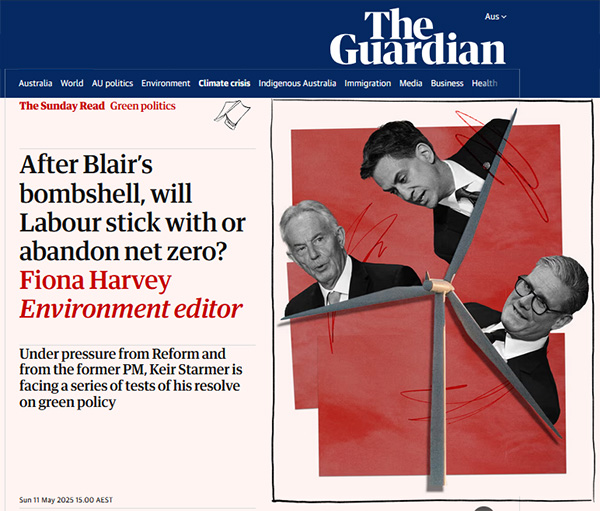

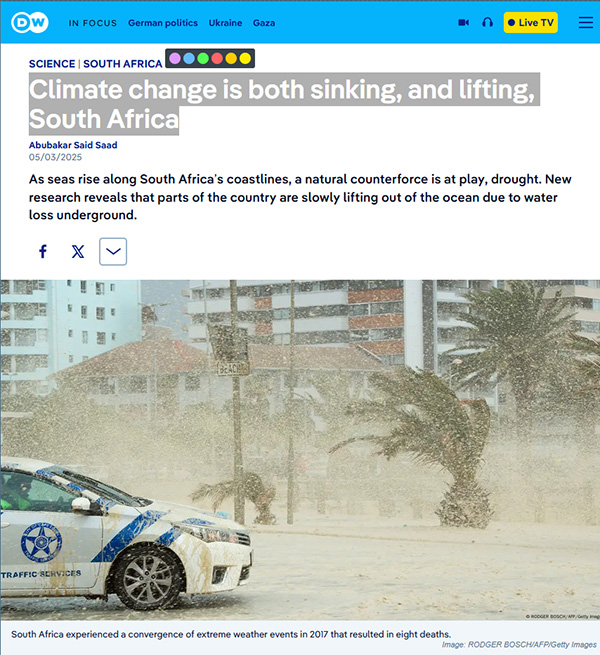
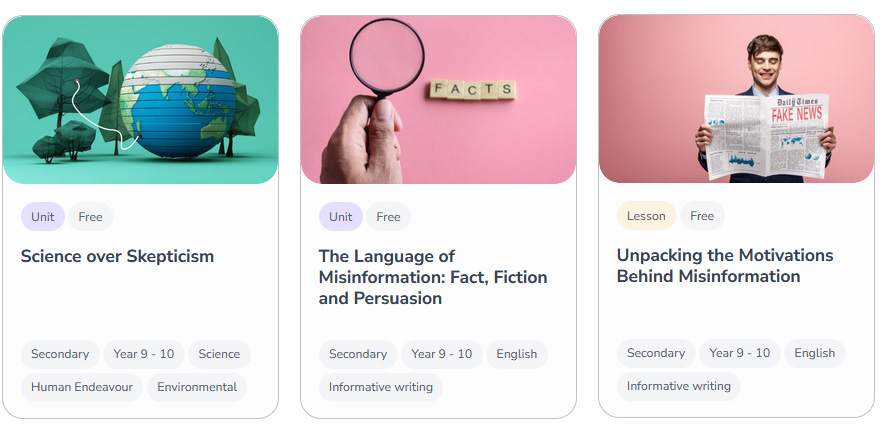


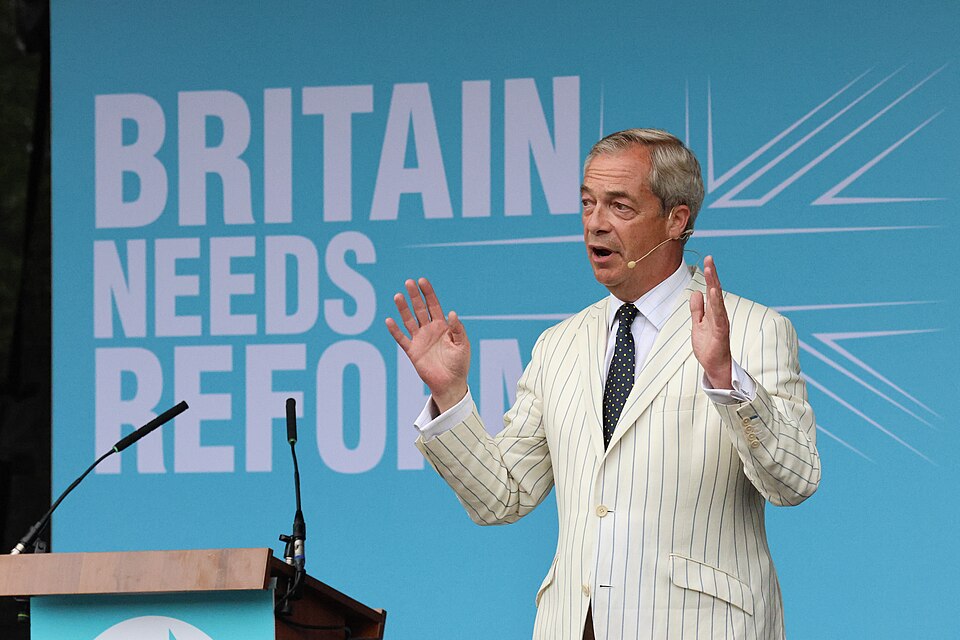


 For the first time the
For the first time the  The How to Vote Cards are available for
The How to Vote Cards are available for












Recent Comments